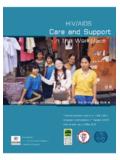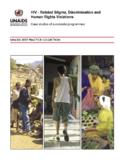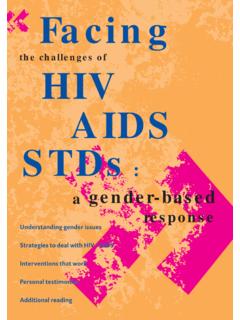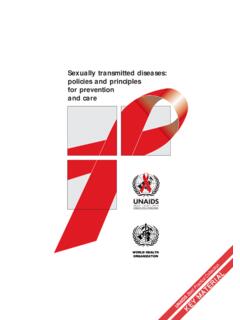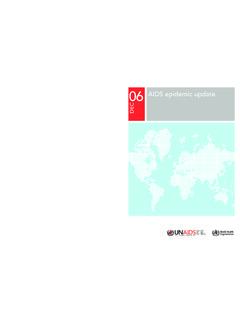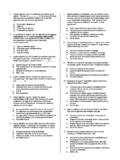Transcription of Strategies to strengthen NGO capacity in resource ...
1 Strategies TO STRENGTHENNGO capacity IN resource MOBILIZATIONTHROUGH business ACTIVITIESThis document was co-authored byMechai Viravaidya and Jonathan HayssenPDA and UNAIDS Joint PublicationUNAIDS Best Practice Collection2001 PDAThe work of non-governmental organizations (NGOs) protecting the environment,helping the sick and needy, preserving arts and culture is by nature unprofitable. Traditionally, NGOs rely on the goodwill and generosity of others to cover the costs oftheir activities through grants and donations. Today, unfortunately, NGOs find that suchtraditional funding sources are often insufficient to meet growing needs and rising addition, restrictions imposed on many grants and donations, along with the uncertaintyof these funds over time, make it difficult for NGOs to do long-term planning, improvetheir services or reach their full the costs of an NGO s core activities exceed the inflow of grants and donations, it isforced to either reduce the quantity and/or quality of its work, or to find new sources offunds to cover the difference.
2 Reaching out to new donors with innovative fund-raisingapproaches is usually the first step. Redesigning program activities to include cost-recovery components, whereby the beneficiaries or clients of the NGO pay part of programcosts, is a second approach. A third alternative is for the NGO to make money throughcommercial UNAIDS Best Practice key material is directed at managers of national andinternational NGOs working on HIV/AIDS and other health and development issues. It isintended to increase their awareness of the opportunities, and possible problems,associated with alternative resource mobilization Strategies , with a special focus oncommercial activities .
3 It is hoped that this will motivate NGO managers to determine andbegin implementing the most appropriate resource -generating Strategies to enable theirorganizations to continue and expand their important makers, donor agencies and other supporters of NGOs also have a vested interest inseeing NGOs achieve financial sustainability. It is therefore hoped that this paper willencourage such readers to increase their efforts to promote such institutional developmentfor NGOs. Non-government organizations make our world a better place. Together wecan ensure that they continue to grow and o r e w o r dT a b l e o f C o n t e n t sChapter Funding Challenge Facing NGO Response to Financial Security through for NGO Commercial Ventures: An NGO as business Owner: Special an Idea and Planning the : The Question of h a p t e r Funding Challenge FacingNGO ManagersDespite the vast differences among theworld s non-governmental organizations(NGOs), most share a common dilemma:Lack of funds limits the quantity and/or quality of the important work theydo.
4 Unlimited needs chasing limitedresources is a fundamental fact ofeconomic life in rich countries andin poor countries. It affects largeinternational organizations, such asthe United Nations, down to thesmallest local NGOs. From ruraldevelopment agencies to museums, andfrom health care providers to educationand training institutes, managers ofNGOs must often pay as much (if notmore) attention to finding funds as theydo to using those increasingly find that grants anddonations are inadequate to meet currentprogram needs, much less to expandprogram activities . With so manyworthy causes that address genuineneeds competing for the attentionand generosity of the public, evenwealthy donors lack the resourcesneeded to fund every worthwhileeffort.
5 Furthermore, as populationsgrow, so do the numbers of vulnerablegroups needing assistance fromNGOs. New problems can appear, suchas HIV/AIDS, which demand urgentattention and require substantialfunding. Meanwhile, NGOs facerising costs for staff and other programinputs, further straining their on grants and donationscan also inhibit the autonomy ofNGOs to choose which programactivities to undertake and to selectthe most effective interventionstrategies to achieve program a certain extent, all donors havetheir own agenda, , their own viewsas to which problems are importantand the best intervention strategiesto address these problems.
6 NGOmanagers may be compelled to follow the money and allow donorsto dictate the scope and direction oftheir activities , or else receive nofunds at all. As the old saying goes, beggars can t be choosers. Another problem is that many grantsand donations carry restrictions onthe types of expenses that they maycover. The most common restrictionis to cover only direct programcosts, but not the cost of supportservices or other overhead costsincurred by the NGO. The NGOsmust contribute these costs ontheir own, or at least cover anincreasing share of these costs overtime. But how?1 Strategies to strengthen NGOC apacity in resource Mobilizationthrough business ActivitiesEven those NGOs fortunate enoughto be fully funded in their currentoperations may face uncertainty overfuture funding.
7 If the problems theyaddress are still around in five, ten,twenty years, will donors keep payingprogram costs ad infinitum? Or willdonors generosity shift to other moreneedy or more popular causes? As onecountry develops economically, willdonations be diverted to other, poorercountries? Could local political orsocial problems lead to a cut-off ofdonor support? What if a key donoritself goes out of business ? Theuncertain continuity of donor funding,be it short term or long term, makesit extremely difficult for NGOmanagers to plan and implement theirorganization s core activities . It alsomay force an NGO to live a project-to-project existence, being unable tomake long term plans to expand coreactivities or to improve the qualityof program we see that today s NGOmanagers face an increasing need fortheir organizations services, increasingcosts for providing those services, andan increasingly competitive andrestrictive environment for obtainingfunds through grants and best, these problems preventNGOs and those they serve fromreaching their full potential; at worst,the very survival of many NGOs isat stake.
8 The challenge facing NGOmanagers is to find ways to increasetheir financial security withoutsacrificing the mission of is no standard, proven methodto meet this challenge. All NGOs aredifferent in terms of their missions,philosophies, client bases, skills andexperience. But increasing financialsecurity is an important part ofplanning for all NGOs. Becomingcompletely independent of donorsmay be a realistic goal for someNGOs, while trying to self-generatefunds just to cover overhead costsmay be more suitable to others. Stillothers may legitimately determinethat relying on grants and donations,at least for now, is the best is no right answer.
9 It is up toeach NGO and its managers toconsider all the funding optionsavailable and to choose the mostappropriate mix, just as they mustdetermine which core activitiesand implementation Strategies aremost appropriate to their missionand to strengthen NGOC apacity in resource Mobilizationthrough business ActivitiesC h a p t e r Response to DateThe funding challenge described earlieris already well understood by mostNGOs, and many have responded withthe same entrepreneurial spirit, goodplanning and hard work that broughtthem success in their core have expanded fund-raisingactivities directed at the generalpublic, tapped new corporate donorsfor monetary and in-kind support,and held one-time events such asthe LIVE/AIDS concert.
10 They haveredesigned program implementationstrategies to include cost-recoverycomponents whereby the beneficiariesof the program pay part, and sometimesall, program costs. And today we evensee NGOs owning and managingrestaurants, tour companies, banks,clinics and other the case of museums. Ageneration ago, most covered theircosts through wealthy patrons, civicgrants, and minimal admission , museums commonly haverestaurants to feed their visitors,operate shops that sell reproductionsof their unique artworks along withother products that appeal to the tastesof museum goers, and rent out theirexhibition halls for private receptionsand , Goodwill and Oxfamhave long operated retail storesto subsidize their developmentactivities, and T-shirts and otherpromotional items sold throughshops, catalogs and the internet arenet sources of cash for CARE, Savethe Children.
